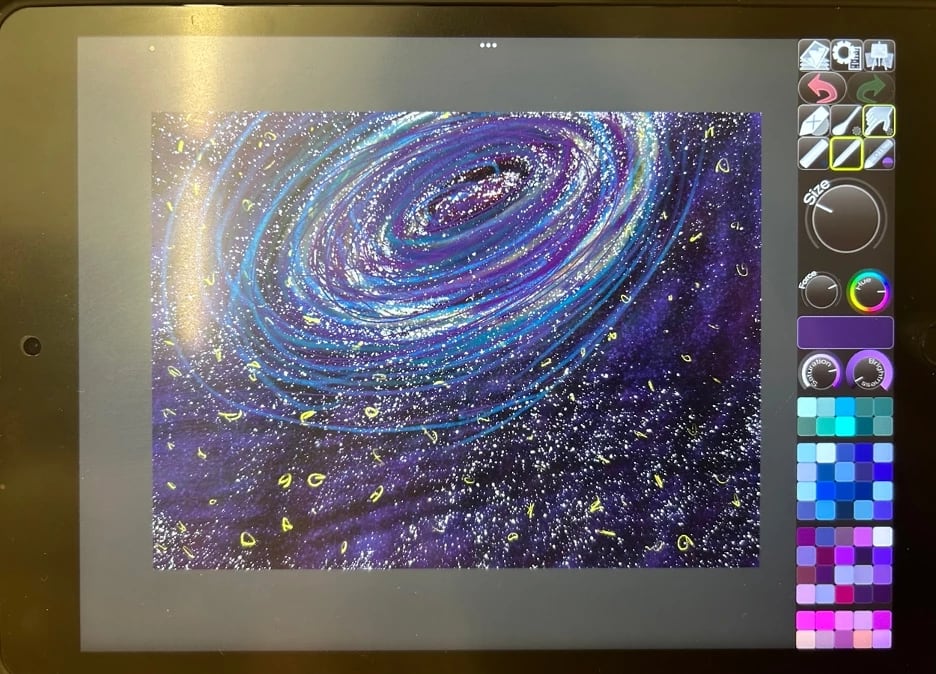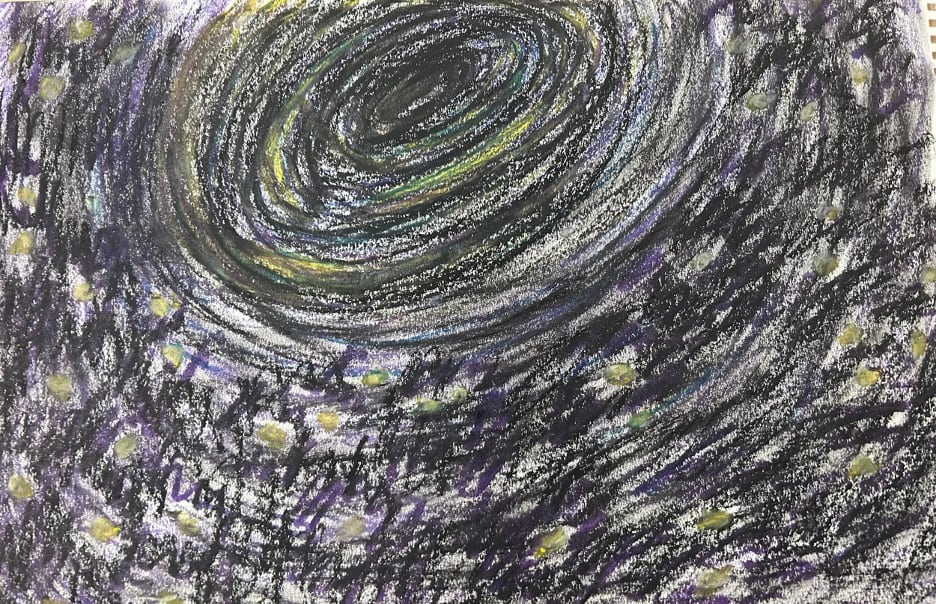
Digital art apps are increasingly able to recreate the elements of physical mediums
In the past few weeks, SVA’s first-year art therapy students have been exploring the role of digital art therapy and telehealth in clinical practice. The landscape of digital art therapy is constantly and rapidly evolving, mirroring the evolution of technology. New apps and programs are created every day. These technologies can be successfully integrated into art therapy practice. Modern apps allow for useful features including real-time collaborative drawings, simulated textures and blending behavior of traditional media, pressure and angle sensitivity, recordings of the process, and so much more.
Digital art therapy can enhance distance therapy by providing a substitute for supplies that clients may not have on hand, allowing real-time therapist-client collaboration, and increasing accessibility. Digital art is ideal for situations where materials are restricted, space is limited, or the tactile aspects of a material are uncomfortable. On the other hand, digital art therapy is not appropriate in all circumstances. People with less developed technological skills, people who cannot afford the equipment, people who are addicted to technology, and people who need a more tactile experience are all people who may perform better with traditional materials.
Digital art therapy is an exciting area of the field, one that is in constant flux. Digital art therapy has unique strengths and pitfalls, but with careful consideration, incorporating digital art therapy into in-person and virtual practice can enhance client experiences and outcomes.




